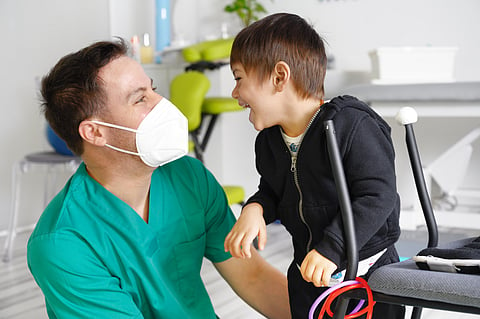Cerebral Palsy Can Harm a Child's Spine, but Corrective Surgery Is Getting Safer
Key Takeaways
Cerebral palsy in kids can often mean concurrent scoliosis of the spine
New research shows that spinal fusion surgeries to correct the condition have improved over the past 15 years
Issues around blood loss and patient recovery have improved, although infection rates remained the same
FRIDAY, Dec. 22, 2023 (HealthDay News) -- Children with the motor disorder cerebral palsy can often also develop scoliosis of the spine, adding to difficulties with movement.
But a new review shows improvements over the past 15 years in the safety and effectiveness of spinal fusion surgeries that can correct this issue.
"We reviewed 15-year trends in operative factors, radiographic and quality-of-life outcomes, and complication rates in children with cerebral palsy related scoliosis who underwent spinal fusion," said a team led by Dr. Paul Sponseller. He's chief of pediatric orthopaedics at the Johns Hopkins Children’s Center in Baltimore and professor of orthopedic surgery and at Johns Hopkins University School of Medicine.
Cerebral palsy strikes about 1 in every 345 children in the U.S., according to the U.S. Centers for Disease Control and Prevention (CDC). About two-thirds will also develop scoliosis, a debilitating curvature of the spine.
Spinal fusion surgeries can correct scoliosis, but infections and blood loss are a risk.
To see if these surgeries have improved, the Hopkins team looked at data on 638 kids and young adults with cerebral palsy treated with spinal fusion in the 12 years between 2008 and 2020. Patients were treated at one of 14 U.S. academic hospitals.
The surgeries got safer in five main ways, the study found:
Less blood loss. The volume of blood lost during spinal fusion was cut by about two-thirds between 2008 and 2020.
Smaller blood transfusions. The average transfusion used in 2020 was about half that needed 12 years earlier.
Less time needed for post-op intubation. Patients needed to be intubated for about two-and-a-half days after their fusion surgery in 2008. By 2020, that was down to just a half-day.
Fewer pelvic fusions. There's been a decline in pelvic fusions as part of the spinal fusion procedure. That means better post-op mobility and less pain for patients.
Better technologies. More surgeons are using what the researchers called "advanced instrumentation" now than in years past.
Some safety issues didn't change, however: Infection rates didn't budge over the study period; hospital stays (including the intensive care unit) remained the same; and patients' quality of life two years after their surgery was similar, as well.
Still, the improvements that have been observed might also be happening for patients with other forms of scoliosis unrelated to cerebral palsy, Sponseller's group suspects.
The findings were published recently in the journal Spine.
More information
Find out more about cerebral palsy at the American Academy of Pediatrics.
SOURCE: Johns Hopkins University School of Medicine, news release, Dec. 18, 2023
What This Means For You
Surgery for children with cerebral palsy who develop scoliosis may be safer now than in years past.


